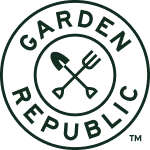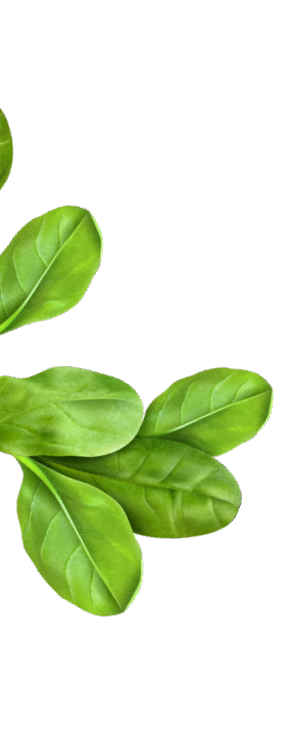Who doesn't love breaking out their creative side and learn a new skill? Gardeners especially are always looking for practical ways to use plants in our everyday lives, beyond eating them, of course!
Making soap is a fabulous way to use the herbs and flowers you are already growing in your garden. Not only do you get to choose the ingredients, but you also get to make a fun product that is useful and great for your body!
There are many plant varieties you can use in homemade soap!
- Lavender petals
- Cornflower petals
- Peppermint leaf
- Calendula flowers
- Chamomile flowers
- Comfrey leaf
- Dandelion flower
- Lemon Balm leaf
- Rosemary
- Rose petals
- Lemongrass
- Nettle leaf
- Echinacea
- Jasmine flower
There are other varieties you can you. Just make sure it is safe for your skin!
Below are a few ways you can incorporate herbs in your soap.
- Make your favorite herbal tea, and use chilled tea instead of distilled water.
- Make herbal/floral-infused oil: Pick one of the oils from the ingredient list below and infuse it with your pick of herbs and/or flowers. You can read how to make your own infused oil here!
- Put dried flowers in the soap or on top as a finish/decoration.
What you need to make homemade soap:
- Your favorite dried herbs and flowers (optional)
- 4 oz. Organic Body Butter ( Shea, Kokum, Cocoa, Mango, etc.)
- 9.5 oz Distilled Water (or chilled herbal tea/herbal infusion)
- 12oz Olive Oil
- 7oz Coconut Oil
- 3.5oz of Sweet Almond or Sunflower Oil
- 3.85oz of Lye (sodium hydroxide)
- 1.5oz Castor Oil
- Gloves & goggles
- Spatulas & spoons: silicone or heatproof plastic
- 2.5 lb. soap mold/silicone mold empty milk carton
- Immersion blender
- Stainless steel or #5 heavy-duty plastic container for Lye mixture
- Stainless steel, #5 heavy-duty plastic, or heatproof glass container for mixing soap
- Digital scale: ingredients are measured by volume, not weight.
- Kitchen Thermometer

Time to Make Your Soap!
Safety first! Makes sure you have those your hand and eye protection on.
- Weight your distilled water or chilled herbal tea out into the stainless steel or heavy plastic container.
- Sprinkle your weighed-out Lye into the water and stir well until it is completely dissolved. The Lye will get hot quickly. Handle with caution!
- Put the Lye in a safe location for cooling until it reaches 100-115F, which takes about 30-40 minutes.
- Place the Butter and Coconut oil over low heat until melted, then combine the other oils. Afterward, let them cool until they are between 95F-115F.
- Pour the Lye into the oil mixture and mix together using hand mixing and short bursts with the immersion blender. Make sure you don't overuse the blender, as this will cause air bubbles, leading to the soap mixture thickening too fast.
- Mix until Trace: You can test for "trace" by drizzling a spoonful of the soap mixture across the batter's surface in the mixing bowl. It should leave a brief but obvious mark before disappearing. Depending on the batter temperature and how often you use the blender, trace usually takes between 3 to 10 minutes, depending on ingredient temperatures and how often you use the immersion blender. If you are adding dried herbs within the soap, you will want to add them at this point. Many herbs "bleed" within a soap bar if they are not soaked beforehand, leaving a brown halo around the herb within the soap. To avoid this, first, make tea with the herbs/flowers. You can use the tea water as your lye water, get added nourishment in your soap, or discard it if you want to use plain distilled water.
- Pour the soap batter into your mold. If you want to top your soap with dried herbs and flowers, add them in now. Most herbs added to the top of the soap will only brown slightly, if at all, so it's not necessary to soak/make tea with them beforehand if only going on top. An hour or two after mixing, you'll notice the soap is turning jelly-like and darker in the middle. This is the "gel phase" and is normal!
- Lightly cover the soap with parchment or wax paper, then cover with a towel to insulate. If your house is cold, add extra layers. Take a peek or two at your soap during this time. If it starts to crack, remove insulation and move to a cooler location.
- Let it set for 24-48 hours, remove the soap from the mold onto wax paper, cut into bars, space them out, or put it on a cooling rack. This recipe should make between 6-8 bars, depending on how thick you want them. If your soap is softer than you like when taking it out of the mold, wait a few more days before cutting.
- Let them cure in the open air from 4 to 6 weeks. Rotate every couple of days.
That's the scoop on making your own organic soap at home! There are different variation to the ingredients, and endless choices when it comes to the types of herbs and flowers you want to put in your soap! You can pick different flowers and herbs to provide different nourishing affects to your skin.
You can purchase seeds from us to start your own soap-making garden! Our Herbal Tea Garden Starter Kit will provide you with four choices to use in your soap.
Our Herbal Tea Seed Set and our Culinary Herb Seed Set will both provide you with 10 choices each to put in your soap! 

Happy Soap Making!



